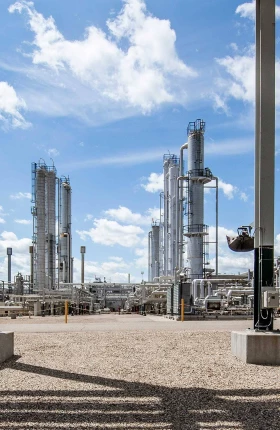Green hydrogen will radically change how we power the planet–and the Nordics are frontrunners. It’s also a fast-emerging investment opportunity for infrastructure investors, and first movers will have an early and sustainable competitive advantage. Mogens Holm, Partner & Associate Director at BCG Copenhagen, explains the great potential for business within this revolution in our climate efforts.
One of the thorniest issues in the transition to a sustainable energy future is supplying energy for critical heavy industries. Wind- and solar-generated electricity is a key element in the global shift away from carbon-based energy, but industries like aviation, shipping, and cement and steel production cannot be fueled by electricity, at least as they are currently configured.
Explore the boxes for a deep dive into Power-to-X:
The best hope for powering these industries sustainably is to use hydrogen-based low-carbon fuels such as ammonia, methanol, and kerosene. These so-called “power-to-X” (PtX) fuels use hydrogen produced exclusively from renewable energy sources, and if we are to reach the Paris Agreement’s net-zero goal by 2050 they must provide 10% to 20% of global energy needs.
But there is work to do. According to our latest research , previous ambitious projections that the low-carbon hydrogen market would begin to scale in 2030 are unlikely to be fulfilled. Volumes are currently held back by a lack of long-term offtake agreements, rising prices for equipment and energy, and a lack of supportive government policies.
Despite the significant obstacles, I am highly optimistic about hydrogen as a game-changing source of clean energy. While governments—not the least in the Nordics—focus on building infrastructure within power generation, they are also creating a conducive environment for private sector infrastructure investments. The focus of my work is helping to find the missing pieces that will make these projects and investments a reality.
Solving the Biggest Challenges
Scaling the infrastructure to produce and transport clean hydrogen may be the biggest hurdle. Transmission systems operators, a mix of public and private entities, have announced that more than 30,000 km of hydrogen pipeline will be operational in the EU by 2030. However, just 4,000 km of planned hydrogen pipelines are in advanced stages today. At this moment, hitting that target date seems less and less likely; it is more a question of how late we will be. But I believe we must move forward.
And there is progress. Producers and regulators are examining alternative approaches to the production and transportation of hydrogen. Offshore infrastructure projects such as energy island hubs could provide a means to scaling up renewable energy and low-carbon fuel production. Back on land, megascale renewable power hubs—which combine wind and solar power generation—could significantly increase the cost competitiveness of renewables-based hydrogen. The investment required for these projects has been a deterrent, but I believe that government support could make development more feasible.
What Will It Take to Reach Net Zero Targets?
In essence, we know what it will take to make green hydrogen power a reality. Some solutions are in plain sight, others require more innovation and development. The underlying question is whether the many stakeholders will summon the commitment and energy to make a sustained push to put these solutions into action.
Our recent research indicates that within the next decade, low-carbon fuels like green ammonia and methanol from the US will become cost competitive with their fossil counterparts in Europe. This shift will primarily be by robust production incentives in the US, coupled with the raising CO2 tax in Europe, which will compel the European chemical and transportation sector to transition to these greener alternatives.
These developments create project investment opportunities in the US as well as in the infrastructure and technologies enabling the use of green fuels in the shipping and power sector in Europe. We also see increasing investor interest in large-scale European green hydrogen projects as dependencies like a hydrogen grid become a reality, especially in Northwest Europe.
There is, of course, more to do. Governments can take steps that strengthen the business case for low-carbon hydrogen, including establishing mandates to create demand certainty and spark investment in infrastructure. Governments can also eliminate obstacles—for example, by streamlining the permitting process and supporting the development of robust supply chains via trade policies and agreements. And companies can collaborate to speed up the development of complex and capital-intensive hydrogen projects and platforms that match supply and demand. Finally, for businesses and investors, it’s a matter of being a first mover if you want to have an early and sustainable competitive advantage.














